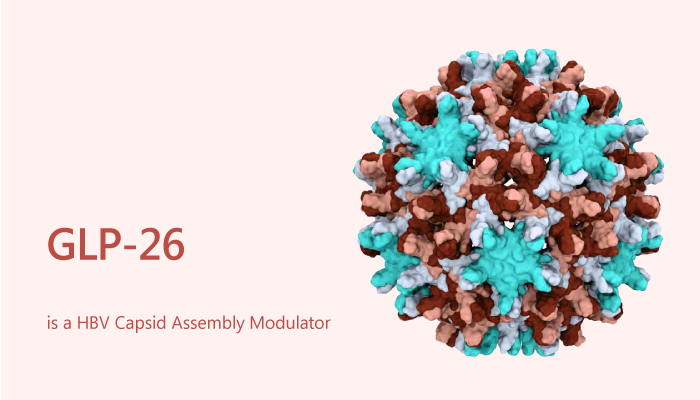Hepatitis B virus (HBV) is a small DNA virus with unusual features similar to retroviruses. HBV is a prototype virus of the Hepadnaviridae family. HBV infections represent a significant burden on global public health. Due to its multiple functions in the viral life cycle, the core became an attractive target for new antiviral therapies. Capsid assembly modulators (CAMs) accelerate the kinetics of capsid assembly and prevent encapsidation of the polymerase-pregenomic RNA (Pol-pgRNA) complex, thereby blocking viral replication. Particularly, GLP-26 exhibits Hep AD38 HBV DNA EC50=3 nM and reduces cccDNA by >90% at 1 μM. Nucleocapsids play a role during genome packaging, reverse transcription, intracellular trafficking, and maintenance of the HBV viral replication cycle.

Capsid assembly modulators disrupt the encapsidation of pre-genomic RNA and can cause nucleocapsid disassembly, thereby affecting multiple steps of HBV replication and reduction of covalently closed circular DNA (cccDNA) pools. Glyoxamoylpyrroloxamides (GLPs) are the newest class of highly potent capsid assembly modulators (CAMs). Unlike the issues with metabolic stability presented by the sulfamoylbenzamides (SBAs) class, GLP-26 exhibits promising in vivo data, with a T1/2 of >24 hours (in dog and human plasma) and T1/2=7.6 hours (in human liver microsomes). Besides, the dual combination of GLP-26 with Entecavir results in a strong, synergistic antiviral effect. Furthermore, these compounds disrupt already-formed capsids. GLP-26 blocks cccDNA formation and HBeAg production in HepNTCP-DL cells transfected with HBV wild type or HBV core T109I mutant. Moreover, GLP-26 demonstrates a potent block on HBeAg production against wild-type virus.